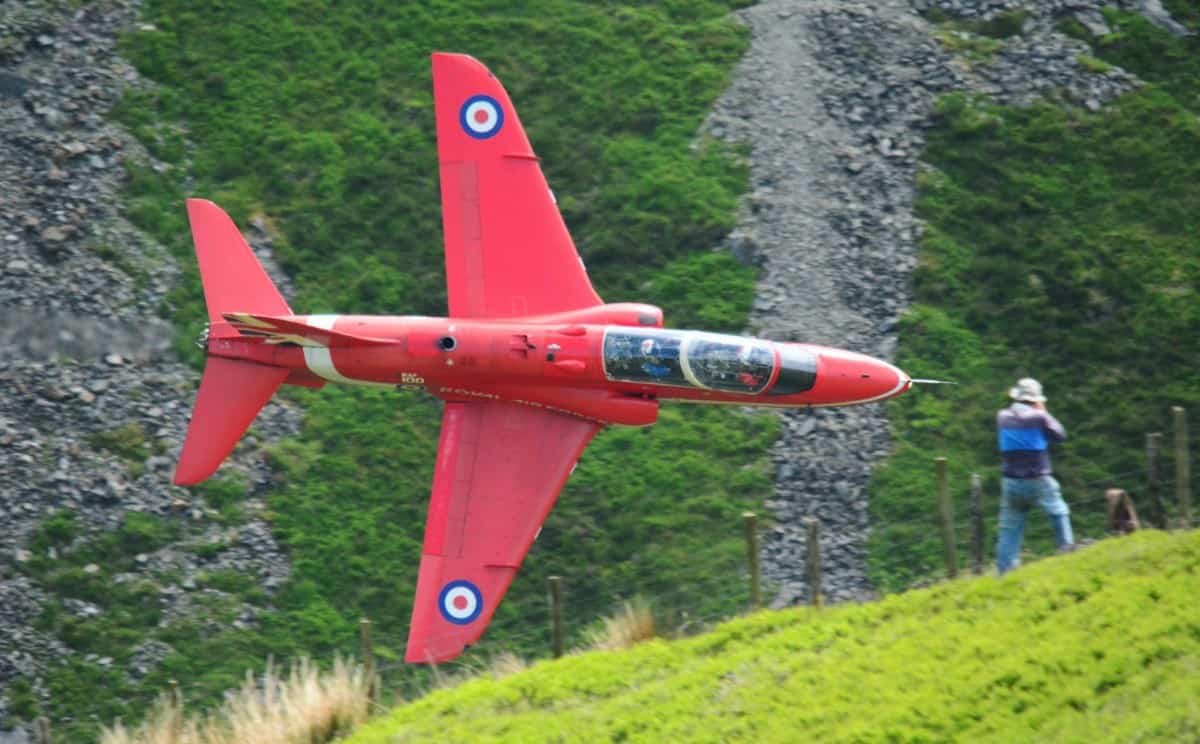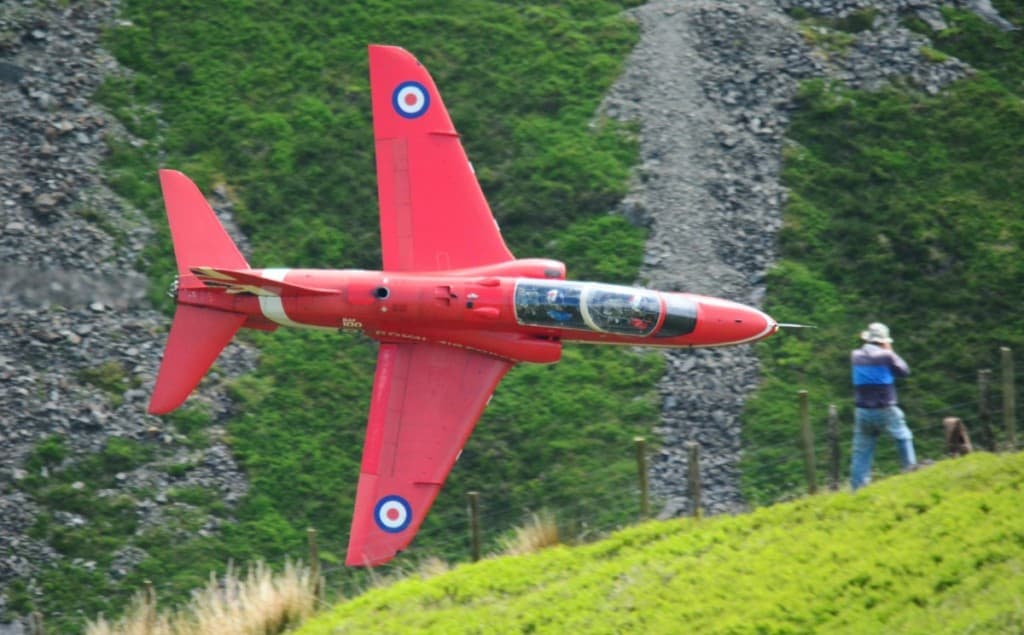
Low-flying aircraft can be an awesome sight or a terrifying sight depending on which side of the fence you sit. To the majority of people, a low-flying aircraft can be a nuisance and if it happens regularly it can become very stressful.
An aircraft can legally fly as low as 500ft above the ground & if in sparsely populated areas or over water there is no minimum height limit but must remain at least 500 feet from any vessel, structure, or person. Aircraft can also fly lower than 500ft when landing and taking off.
Depending on where you are when you see a low-flying aircraft will dictate which of the rules the pilot ‘should’ be following. Let’s take a look at those rules and give you an idea of what is legal and what is a nuisance!
Legal Limits To Low Flying
To keep this simple there are several parts to one of the FAA regulations that govern low-flying rules in the US.
The main regulation is 14 CFR Sec. 91.119 – Minimum safe altitudes: General of the FAR (Federal Aviation Regulations).
In a nutshell, what this rule stipulates is that Except for Landing and Taking Off a pilot:
- Must not fly anywhere upon which they cannot safely land in an emergency without causing damage to people or property.
- If overflying congested areas, the pilot must maintain 1000ft above the highest obstacle within a 2000ft radius.
- If overflying a non-congested area, the pilot must maintain 500ft above the ground.
- If overflying sparsely populated areas, the pilot must maintain at least 500ft to any person, vessel, vehicle, or structure. Note no altitude restriction!
But, a caveat to these rules is that if it is a helicopter it may be operated at less than those minimums, provided the pilot operating the helicopter complies with any routes or altitudes specifically prescribed for helicopters by the FAA.
This could mean a low-flight corridor for helicopters through a busy airspace. A great example of this is the Thames River Low-Level Routes through London, UK to help keep helicopters out of the way of the heavy iron flying into Heathrow, Gatwick, Luton & Stanstead airports.
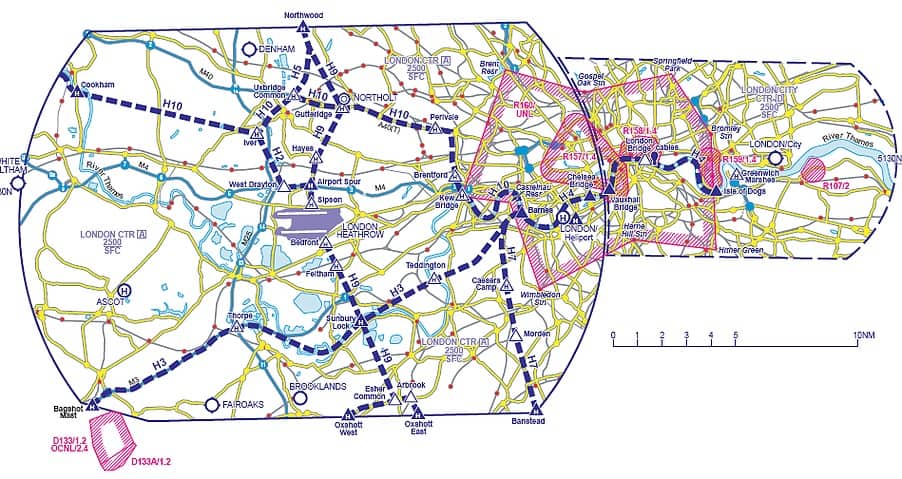
Another example is the heli routes around Boston, MA. Most large cities will have low-flight routes for helicopters to help with separation from the bigger aircraft.
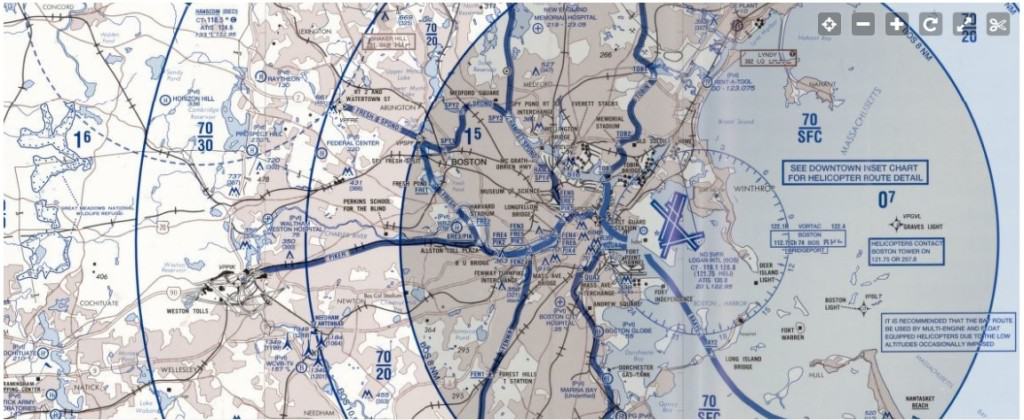
But why do helicopters seem to be able to not follow the 500ft and 1000ft minimum height rules that planes do? It all comes down to the space required for a helicopter to land in the event of an emergency.
A good, well-trained helicopter pilot should be able to land a helicopter with no engine power in an open space the size of a tennis court. Because of this, helicopters are allowed to fly lower, providing they are able to reach a suitable area if that emergency ever occurs.
Helicopters with 2 engines generally do not have to worry so much about this because if one engine fails they still have another donkey still kicking to allow them to carry on flying or take them to a suitable landing location.
Another caveat to this regulation is what is classed as ‘A Congested Area’? The FAA has purposely kept this a gray area to analyze each infraction on a case-by-case basis to balance the pilot’s actions vs the public’s safety.
So would a gathering of half a dozen or a dozen people in a farmer’s field be considered congested? Your guess is as good as mine! If a pilot is conducting a landing they are fine, but a low pass at less than 1000ft high and within 2000ft of the spectators will technically put the pilot into infraction territory!
Learn More…
Try These Articles:
* Helicopter or Airplane: Which is Easier To Fly?
* Can You Land a Helicopter Anywhere? What Will Get You Busted!
Police & Air Ambulance Helicopters
This may be the most common low-flying aircraft you will see depending on where you live. Generally, most pilots flying these machines will try to maintain the limits set out in the regulations above just for noise abatement.
Being courteous to the neighbors in your city is just good airmanship. I know when I would leave the hospital helipad in the middle of the night and overfly my house and woke my small kids, my wife would kill me! It is no different for any household!
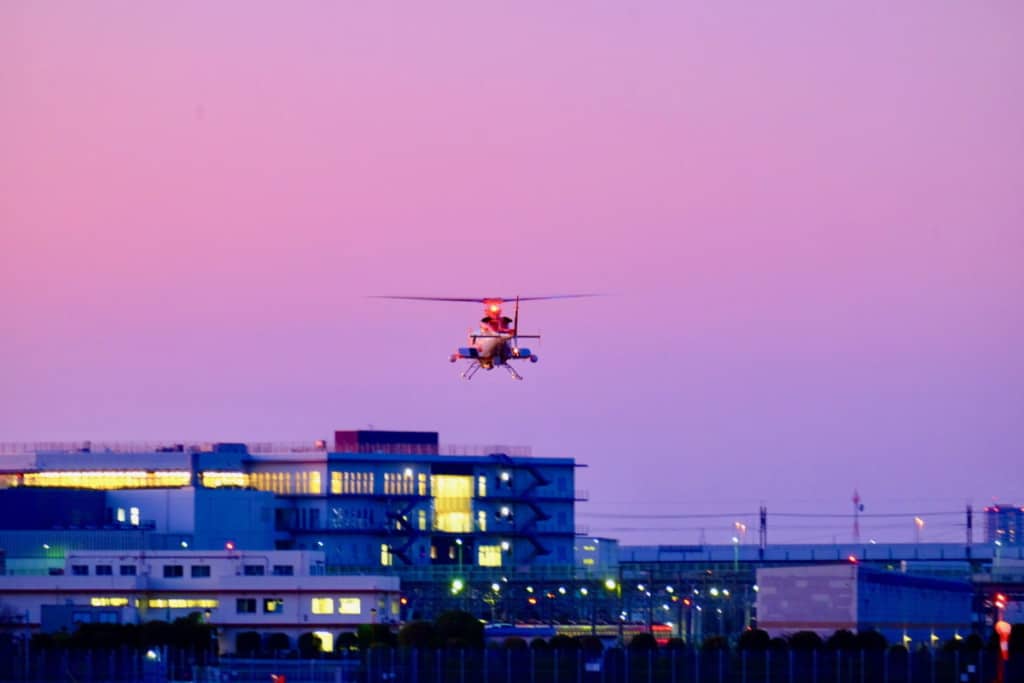
If you are unlucky enough to live by a hospital or police helipad, then that’s just a noise you will have to live with I’m afraid.
Police helicopters and News helicopters could be over a scene for a prolonged period of time covering the incident and should depart once the action is all over. Air ambulances will tend to circle to assess the landing zone then be in and out causing minimal disruption.
Military Aircraft
Military aircraft can and will do whatever they want! They are generally not governed by the FAA rules and regulations that civilian aircraft are bound to but they will follow the same rules when flying within the national airspace system.
Military aircraft can be on urban training exercises, remote low-level tactical training, or even operations concerning national security. If they need to buzz through your neighborhood at 200 ft then that is what they will do.

Join My Newsletter & Get Great Tips, Information and Experiences To Help You Become a Superb Pilot!
However, they will, if they can try to abide by noise abatement procedures, especially if they are operating in the same areas regularly. This can include the route/s to and from the areas of operation. If you live in one of the many military training areas then there is not a lot you can do for low-flying aircraft!
If low-flying military aircraft is something you love to see then one of the best places in the world is the ‘Mach-Loop’ in North Wales, UK.
Check out the video below:
For those of you in the US, then a trip to Rainbow Canyon in Death Valley National Park, California – also referred to as ‘Star Wars Canyon’, will give you up-close encounters with fast military jets!
Check out the video below:
Utility Helicopters
Many small aircraft or helicopters may be seen working low-level at times doing things like powerline and pipeline patrols. A lot of these machines when operating in urban environments will probably use two engines, especially since the 2008 single-engine helicopter crash in Cranbrook, BC, Canada that while on a low-level powerline patrol through the town crashed killing the 3 occupants of the helicopter and a member of the public walking on the sidewalk.
Low flight needed to survey infrastructure, waterways, traffic, and other services is a common occurrence but may only be in your area for a short period of time.
In Canada, we have to apply for Aerial Work Permits from Transport Canada if we are going to be working around people and property at low altitudes. This is basically a plan and risk assessment that helps to identify hazards, minimize risks, and can also help to inform the public of intentions so dozens of homeowners do not flood the 911 dispatch with calls!
The US FAA can issue waivers to companies to be able to legally break the low-flight regulations for things like aviation events or specific work tasks to enable the flights with some pre-planning & risk analysis.
Most of the time working aircraft are not the ones that cause a lot of stress, this group falls into my next category.
Learn More…
Try These Articles:
* Police Helicopters: All Your Questions Answered!
* How Do Pilots See At Night? Everything You Want To Know!
Nuisance Pilots
We have all seen them, we have all heard about them, and for sure we have all seen the videos surfacing on the internet of their antics.
Unnecessary low-flying and showboating is one of the biggest downsides to this great activity, as usual, it is only a select few that create all the problems.
Low flying over property, livestock, people are just a small incident away from being a major catastrophe. Flying at low altitudes leaves very little time for emergency assessments, drastically reduces your emergency landing locations, and can be the difference of a rescued aircraft vs a demolished one let alone the carnage that can be caused to innocent bystanders!
For those pilots that intentionally break the laws and make people’s lives a living hell then they deserve everything they get to help report these pilots you can use this excellent guide on what evidence to collect and then who to contact in your area:
FAA Low Flying Complaints Guidelines
To Finish
Low flying has its place whether it be for airshows, training, aerial survey, or as part of an air traffic control system. Low flying just for the sake of showing off and annoying people is unacceptable.
As time goes on I hope more pilots learn that respect of those on the ground is just as important as the respect that you show to others in the air and the troublemakers will gradually be weeded out. Unfortunately, I don’t think we will ever achieve it as there will always be that one jerk!

